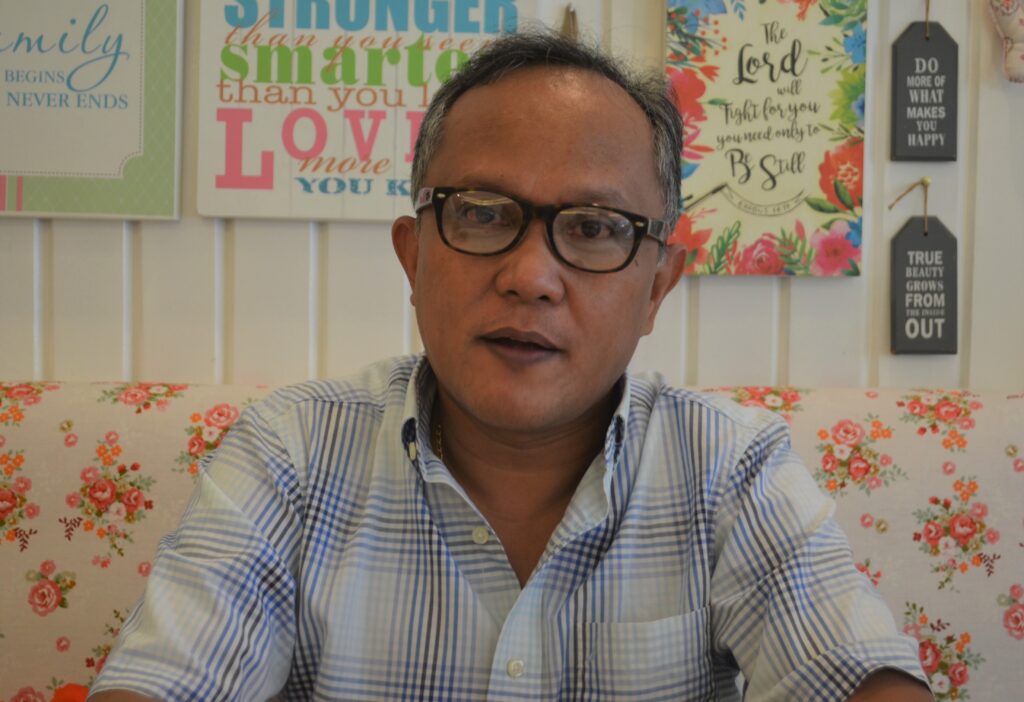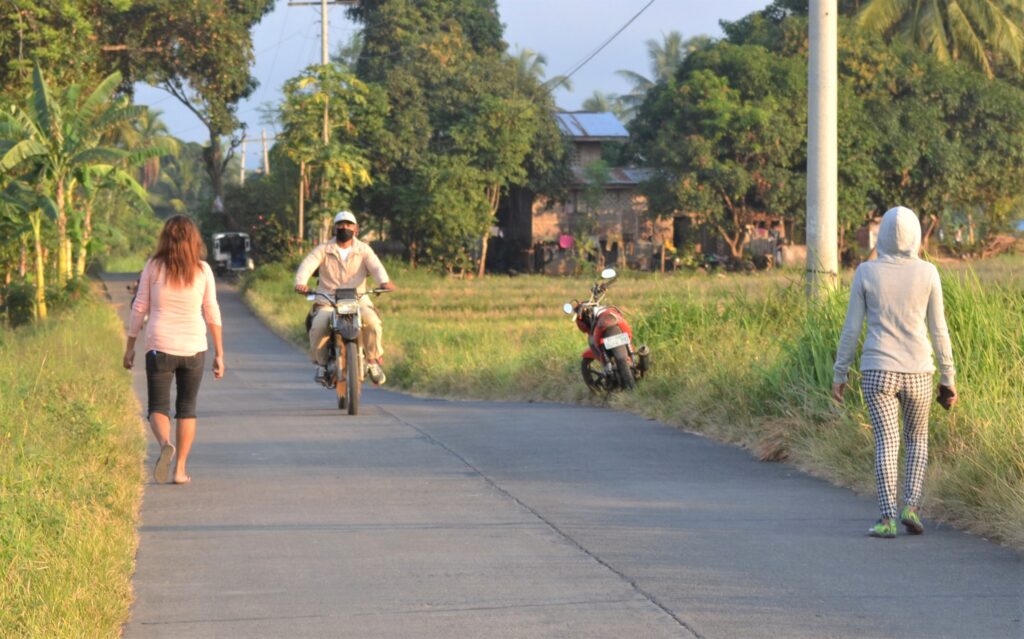Text and Photos by Henrylito D. Tacio
Osteoporosis, a disorder where the bones in the body become weak and porous, is an unnoticeable disease among older folks. In fact, aging automatically means having osteoporosis.
Dr. Alex N. Carpio, who practices orthopedic surgery and joint replacement and adult reconstruction at the Davao Medical School Foundation Hospital, describes osteoporosis as a condition that is degenerative by nature. “It progresses as time goes by,” he explains. “The older one gets; the probability becomes higher.”
Unfortunately, people are doing their bones a lot of injustice. While they’re overly concerned with their heart, brain, and kidneys, they don’t pay much attention to their bones. They take care of their bones only when they get a fracture or when they feel weak and frail because of poor bone health.
Dr. Carpio, who is a fellow of the Philippine Orthopedic Association and Philippine Hip and Knee Society, thinks bone problems should be at par with cardiovascular diseases, mental health, and infectious diseases. “Any illness that takes away the joy of living should be prioritized,” he points out.
Osteoporosis, along with osteoarthritis, are the two most common health problems when it comes to bones. Osteoporosis is called a silent disease partly “because of the nature of the disease and the fact that it develops or progresses without the patient knowing,” to quote the words of Dr. Carpio.
People with osteoporosis should not take the disease for granted “because of the pain that comes with it,” Dr. Carpio says. “It can be quite debilitating at times to a point the activities of daily living are already affected.”
Many patients discover the condition only after they have had a fracture. A survey carried out by the Philippine Orthopedic Center some years back showed that 62.9% of the patients aged 50 and over who had been admitted for fractures were affected by osteoporosis.
For every three Filipino women, one is most likely to suffer from osteoporosis. Among Filipino men, it’s one for every five males. That’s according to the National Nutrition and Health Survey, which used the Osteoporosis Assessment Tool for Asians (OSTA), a fairly sensitive screening tool for osteoporosis.
“Using the high-risk category as our best estimate for osteoporosis,” said Dr. Julie Li-Yu of the Osteoporosis Society of the Philippines Foundation, Inc., “the projected number of at high risk for osteoporosis in 2050 is 10.2 million.”
If the number of Filipinos having osteoporosis in the coming years is overwhelming, the healthcare costs they bring are even more mind-boggling. A study done in 2004 showed that direct costs of hospitalization among patients who sustained hip fracture was estimated to be P92,000 in a government facility and P300,000 in a privately-owned health facility.
“If the same study is applied to those who are projected to have osteoporosis, the projected direct costs of hospitalization would amount to P8.55 billion in 2050,” said Dr. Li-Yu.
Osteoporosis comes from the two Greek words ostoun, meaning “bone,” and poros which means “pore.” Literally, osteoporosis means “brittle” or “porous bones.”
Actually, osteoporosis is a disease that is characterized by low bone mass, deterioration of bone tissue, and disruption of bone microarchitecture. If not treated immediately, it can lead to compromised bone strength and an increase in the risk of fracture.
“Osteoporosis is a risk factor for fracture just as hypertension is for stroke,” said a study published in the European Journal of Rheumatology. “Osteoporosis affects an enormous number of people, of both sexes and all races, and its prevalence will increase as the population ages.”
No one can escape from osteoporosis. “Most people reach their peak bone mass in the spine between the ages of 25 and 30 and reach their peak bone mass in the long bones – such as the hip – from age 35 to 40,” said Dr. Kenneth Cooper, author of Preventing Osteoporosis. “After we pass this peak bone mass age, and especially after about age 45, all the bones in the body begin to lose density.”
Until now, there is still no cure for osteoporosis, but it can be prevented. One of the best ways to prevent it is to be aware of what osteoporosis is, what your predispositions are, and how to handle your predispositions. In doing so, the risk of fracturing bones is reduced.
A diet rich in calcium – along with vitamin D, which helps the small intestine absorb this vital element – is crucial to the prevention of osteoporosis. “Aside from ensuring optimal absorption of calcium, vitamin D also stabilizes nerves that keep reflexes intact, which helps a person maintain balance and prevent falls that can lead to fractures,” says Professor Leilani B. Mercado-Asis, of the Osteoporosis Society of the Philippines.
Studies indicate that calcium combined with vitamin D supplementation can reduce the risk of fracture in men and women over the age of 65. Other studies also show that calcium plus vitamin D increases muscle strength and reduces the frequency of falls among the elderly.
Nutritionists say the food sources rich in calcium are milk, cheese, egg yolks, salmon, and tuna. Vitamin D, touted as a sunshine vitamin can be obtained by spending time under the mid-day sun for about 10-15 minutes.
If you drink, limit your alcohol intake. Alcoholic drinks interfere with the absorption and use of calcium and vitamin D, and other bone nutrients. “Drink only in moderation – no more than one or two drinks per day for men, and more than one drink per day for women,” suggests Dr. Cooper.


Moderate also your intake of caffeine, which is found in coffee, tea, and cola drinks. Studies show that drinking more than three cups of coffee every day may be harmful to bone health. If you enjoy drinking coffee and tea, you can help to make up for any calcium loss by getting enough calcium to meet your body’s needs.
Eating salty food must also be cut down. “The more sodium in your diet, the more sodium you excrete – and the more sodium you excrete, the more calcium you excrete,” explains Dr. Morris Notelovitz, author of Stand Tall! The Informed Woman’s Guide to Preventing Osteoporosis. “What probably happens is that as calcium is being excreted in the urine, the blood levels of calcium drop, causing the release of parathyroid hormone, which breaks down bone to restore calcium levels.”
Another preventive factor: exercise. “Regular exercise helps prevent osteoporosis, stimulating bones to thicken,” wrote Per Ola and Emily D’Aulaire in an article published in Reader’s Digest. “When muscles attached to it strain and contract, a bone responds by building denser tissue. But if the muscle is underused, the bone disassembles itself.”
To increase bone mass, doctors recommend activities such as walking, running, tennis, dancing, and low-impact aerobics. “Exercise,” says Dr. Barbara Drinkwater, a research psychologist at Pacific Medical Center in Seattle, “may help delay osteoporosis fractures by ten to 15 years.”
Finally, watch out what medicines you are taking. Some drugs can hasten bone loss, says Dr. B. Lawrence Riggs, a professor of medical research at the Mayo Clinic. Those most likely to cause problems are as follows: corticosteroids, rheumatic disorders, allergic conditions, and respiratory disease; L-thyroxine, a thyroid medication; and furosemide, a diuretic often used against fluid retention associated with high blood pressure and kidney problems.
“Talk with your doctor about this possible side effect,” Dr. Riggs suggests. “If you have other risk factors as well, your doctor may want to check your bone density and, if it’s low, alter the dosage or stop the drug entirely.”
Meanwhile, Dr. Carpio has this final statement: “It is best to adopt a healthy lifestyle as soon as you can. Bear in mind that we store up calcium from what we eat up to age 30-35. After that, we start losing what we have stored afterwards. Avoid smoking. Everything else in moderation.”

